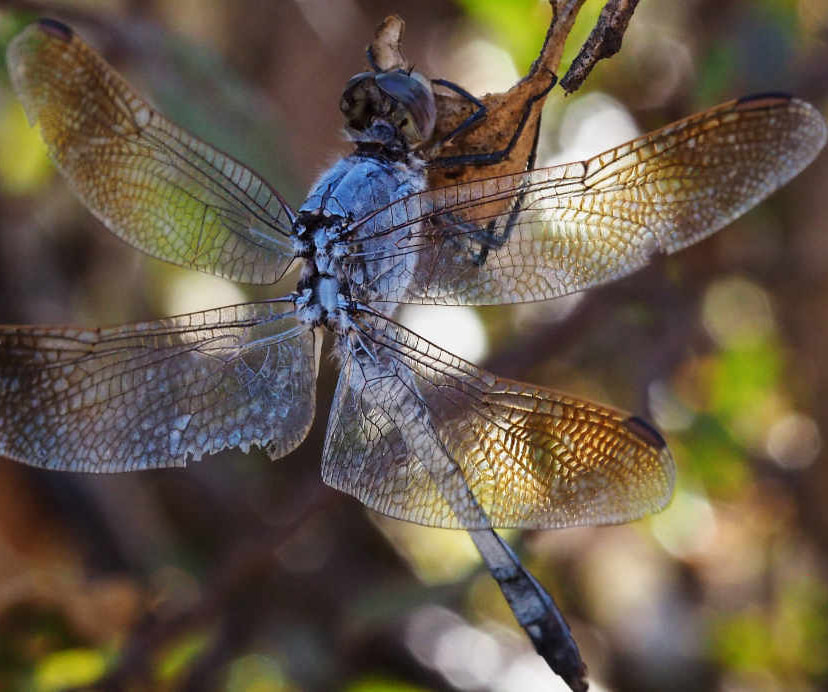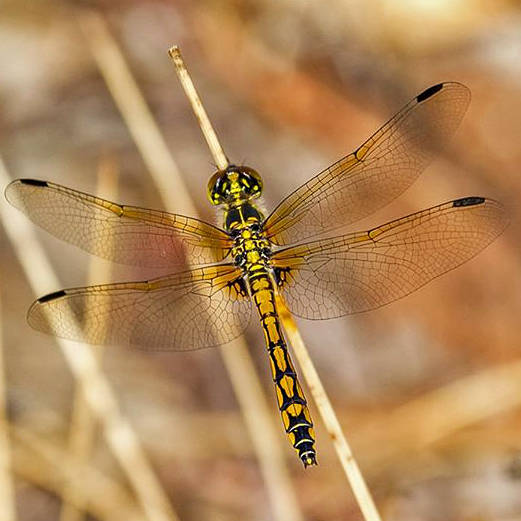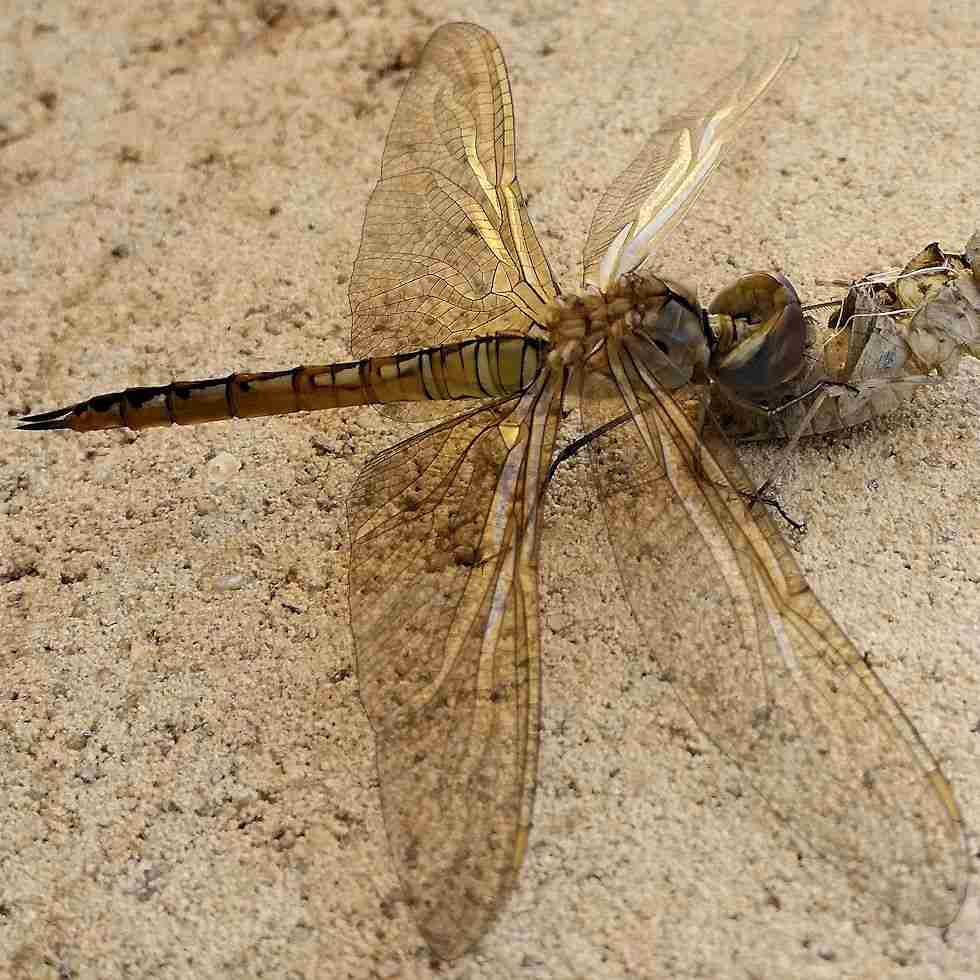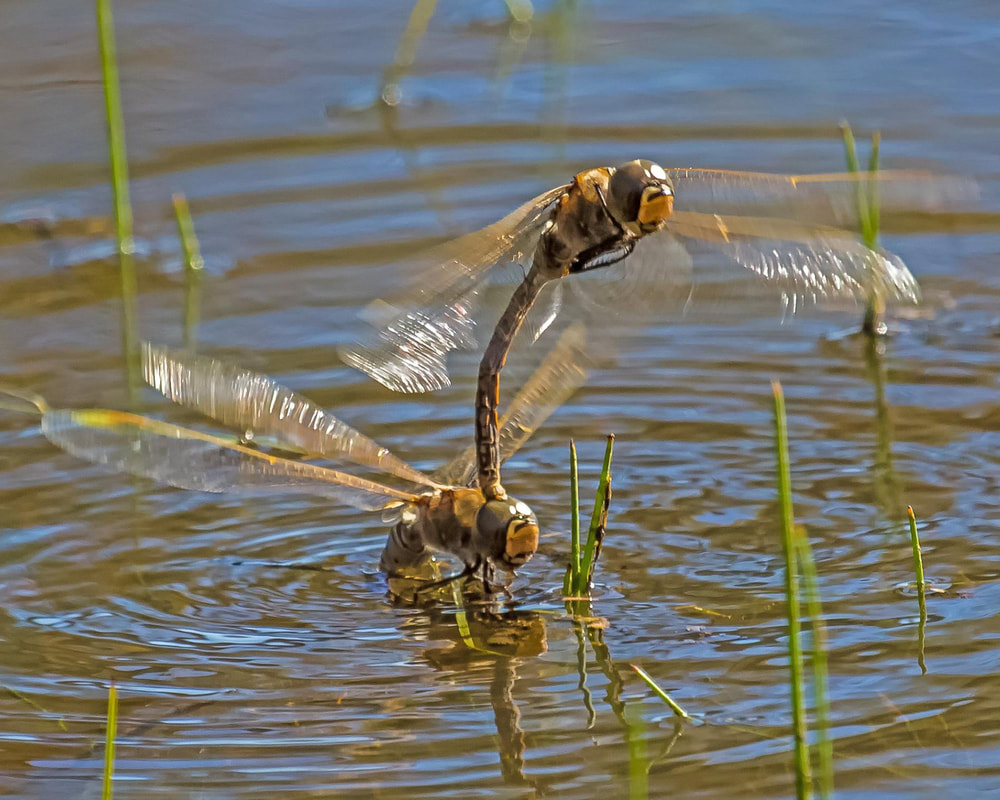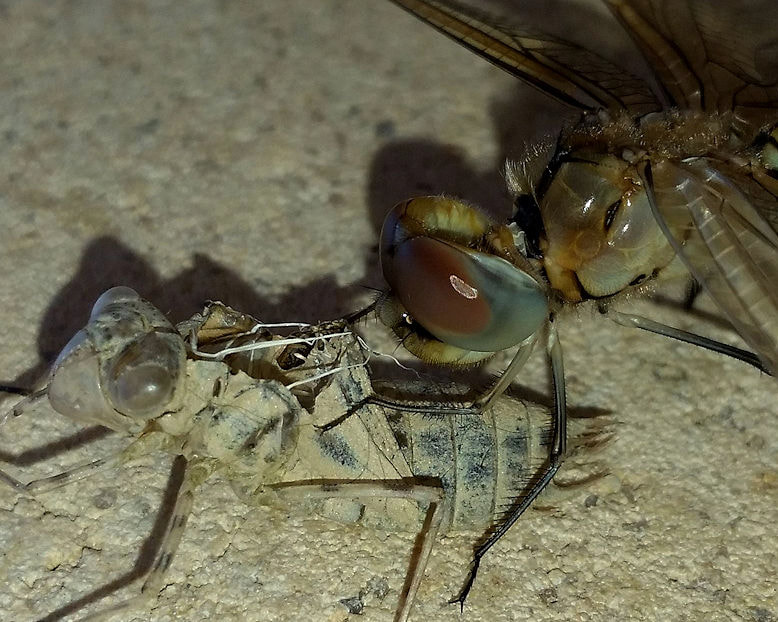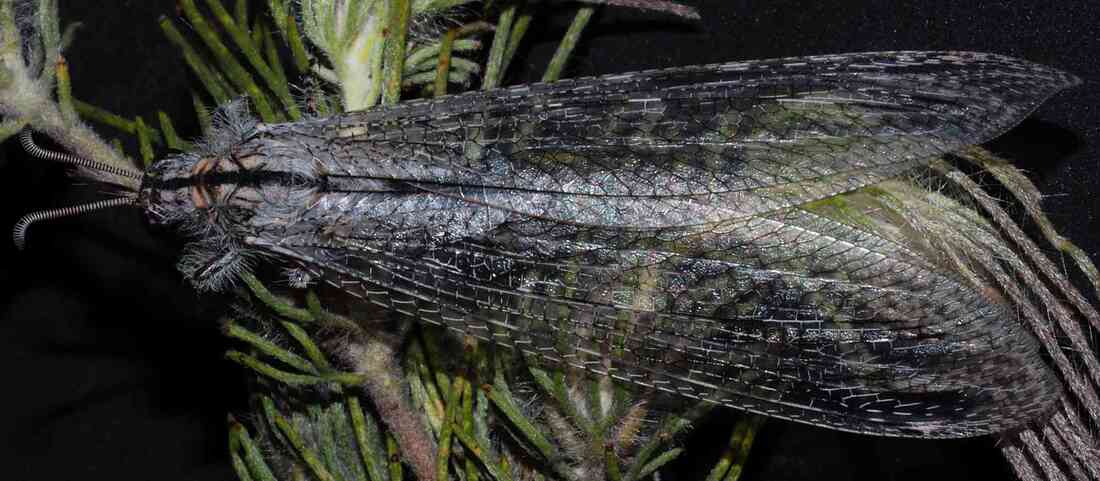| They belong to the order Odonata, which means serrated teeth. If you are fast and silly enough to hold one, expect a nasty nip. Damselflies are smaller but like dragonflies. They can be distinguished by
|

This is indicated by enormous eyes and tiny antennae.
Dragonflies are expert fliers. They can fly straight up and down, hover like a helicopter and even mate mid-air. They catch their insect prey by grabbing it with their feet.
Dragonflies and their larvae are aquatic and eat just about anything—tadpoles, mosquitoes, fish, other insect larvae and even each other. Adult dragonflies are top predators in the insect world, and apart from being caught by the odd bird, live a full adult life (from a week to a year depending on species).
Dragonfly common names refer to hunting methods.
Hawking - Most dragonflies capture their prey in flight, plucking live insects out of the air. By forming a basket of sorts with its legs, a dragonfly can overtake a fly or bee and simply scoop it up and pop it into its mouth, without stopping. Some, like darners and spread wings, will just open their mouths and swallow whatever they catch as they fly. Dragonflies that use hawking to catch their prey include darners, emeralds, gliders, and saddlebags. Unfortunately some common names can be misleading. Common names for Pantala flavescens are wandering glider, globe wanderer and globe skimmer.
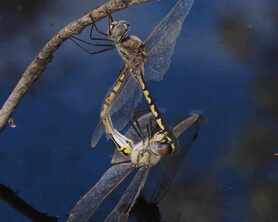 mating dragonflies
mating dragonflies Dragonflies breed in the Claypit where I found a wandering glider, which had just emerged there from its larval shell. It is amazing how a dragonfly can emerge from its much smaller larva. Wandering gliders can fly up to 4,000 kms to complete their life cycle.
Net-winged insects like lacewings can be confused with damselflies. They evolved about 50 million years later as land hunters, which do not need water for breeding. A way to detect them is to look for their long antennae. They are most active in the evening.
